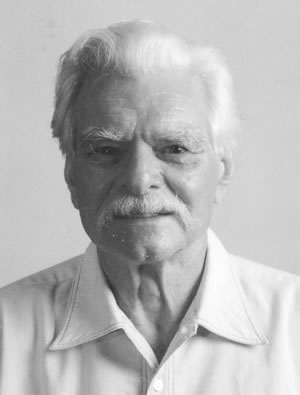By Albert Amateauå
Thomas Mangravite, a lifelong Villager and prizewinning cameraman who taught cinematography at New York University for 20 years, died Aug. 11 at the age of 85.
As a 17-year-old Merchant Marine Academy cadet, he served as a marine engineer aboard merchant ships during World War II and ended the war as a lieutenant commander in the U.S. Navy Reserve.
In the 1950s he worked at Bell Laboratories in the Village where he designed a high-speed camera to photograph parts of a missile control system in motion, as well as two other special cameras.
A man of broad-ranging artistic and technical talents, he was also associated in the 1950s with Dr. Wilhelm Reich, a Viennese psychiatrist who died in prison in 1956 after the Federal Drug Administration convicted him in connection with the manufacture and sale of “orgone boxes,” which Reich claimed had almost miraculous therapeutic benefits.
Although in ill health in recent years, Tom Mangravite taught regularly until September 2009 when he had open-heart surgery, said Pamela La Bonne, his wife of nearly 30 years.
Mary Schmidt Campbell, dean of New York University’s Tisch School of the Arts, said, “Honest and forthright, Tom spoke his mind always out of his sincere belief for what was right for the department and right for our students.”
Michael Carmine, director of camera studies of the Tisch School’s Kanbar Institute of Film and Television, said, “Tom was the smartest cameraman I ever met. Students from 20 years ago still come up to me to talk about his special-effects lecture and demonstration in which he makes himself disappear on camera using two-way mirrors. It was magic!”
Tom Mangravite was camera operator, director of photography or lighting director on 49 feature films, and shot almost 3,000 commercials and 200 short documentary, educational and theatrical films in all formats, from 16-millimeter to IMAX, including Cinerama and 3-D.
He was born in the Village, the son of Thomas and Ellen Glenfield Mangravite. His father was a stonemason and bricklayer. The family belonged to the parish of St. Joseph’s Church. Young Thomas’s name is on the bronze plaque on the church on Sixth Ave. honoring parishioners who served in World War II.
A cadet at the Kings Point Merchant Marine Academy soon after Pearl Harbor, he was commissioned a third assistant marine engineer on merchant ships in 1943.
“He told me about being in a ship’s engine room with the engine stopped, listening in complete silence to the torpedoes go by,” said La Bonne, who married him in 1982.
After Tom was discharged from naval service and married at the time to a girl he had met as a teenager, he went to Paris as a photographer for a U.S. Army magazine, shot freelance photos and did sculpture.
“He was really a Renaissance man, a cabinetmaker, carpenter, sculptor, photographer, cinematographer, inventor — he did everything,” La Bonne said.
Back in New York in 1949 Tom Mangravite worked for the Department of Parks on pool filtering systems and later was a technical aide to Hunt Diderich, a sculptor whose work is in the Metropolitan Museum of Art, according to a résumé he drafted in 1998. In a 1998 interview with James Strick, a history of science scholar, Tom Mangravite recalled his involvement with Reich and Dr. Michael Silvert, a Reich associate. Although denounced by mainstream psychiatrists, Reich’s theory of orgone energy won many adherents in the 1950s and led to the development of accumulators — boxes made mostly of wood with some metal and large enough for a patient to sit in to absorb the “energy.”
Mangravite, a patient of Silvert’s at the time, fabricated Reich’s orgone boxes in New York, at a cost of about $100, and Reich sold them for about $400, according to the Strick interview.
But because of the trouble with the F.D.A., Reich moved to Maine and told Mangravite not to send any boxes across state lines. However, a man purporting to have an orgone box in Pennsylvania asked Mangravite to mail a small metal wire component to a Pennsylvania address. Soon after, federal agents arrested Mangravite and took him in handcuffs to Portland, Maine, to testify as a material witness in the federal case against Reich.
Both Reich and Silvert were sentenced to two years in prison, but Reich died before his sentence ended.
“I met Tom at a party in 1973,” said La Bonne. By that time Tom was long divorced from his first wife and was about to be divorced from his second wife, Phyllis Stevens, an artist. “He was the smartest man I ever met,” said La Bonne, who married Mangravite in 1982.
In addition to N.Y.U. he taught a lighting seminar at Columbia University in the mid-1960s and courses at the School of Visual Arts in the 1970s.
His feature film work included “Across the River”; “Death Wish,” with Charles Bronson; “Tattoo,” with Bruce Dern; and stunt photography in “Superman.”
Redden’s Funeral Home was in charge of arrangements.
A memorial will be held at 1 p.m. Sun., Sept. 25, on the Tisch soundstage at 721 Broadway where he taught a generation of cinematographers.





































